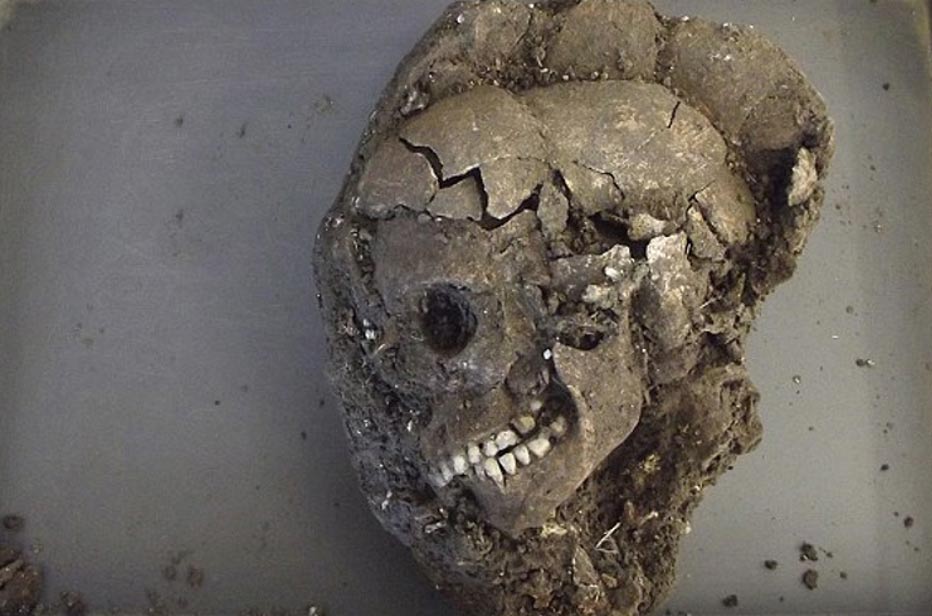Body of 4,000-year-old teenager near Stonehenge may give clues about Bronze Age lives
Archaeologists have unearthed a 4,000-year-old adolescent who lived near Stonehenge and was buried in the fetal position with an amber necklace. Now archaeologists working at the site of Marden Henge in Wiltshire, England, will study the body to determine the child's gender, diet, cause and time frame of death. By examining minerals in the child's teeth, they may also be able to tell what part of England he or she was from. Scientists hope the studies will provide information about the people who lived near and built Stonehenge in the Vale of Pewsey.
It is possible the adolescent traveled to Stonehenge itself, though the site where the body was found, at Marden Henge, is 15 miles (24 km) away from the world's most famous stone circles.
Marden Henge, about which little is known, is the largest and considered one of the most important ancient ceremonial sites in Britain, researchers say. Archaeologists this summer are excavating the remnants of a house up to 4,400 years old on the site, which lies halfway between the World Heritage sites of Stonehenge and Avebury.

The world-famous site of Stonehenge, Wiltshire (Wikimedia Commons)
Lead archaeologist Jim Leary told The Daily Mail: “The skeleton is a wonderful discovery which will help tell us what life was like for those who lived under the shadow of Stonehenge at a time of frenzied activity. Scientific analysis will provide information on the gender of the child, diet, pathologies and date of burial. It may also shed light on where this young individual had lived.”
The skeleton's arms were crossed, its head turned to the right and its legs drawn up. The teenager was 1.5 meters (4.9 feet) tall. In addition to the skeleton, archaeologists have found blades, flint arrowheads, shale and copper bracelets and decorated pottery. They also unearthed a Roman brooch.
"Marden Henge is located on a line which connects Stonehenge and Avebury,” Leary said earlier this month. “This poses some fascinating questions. Were the three monuments competing against each other? Or were they used by the same communities but for different occasions and ceremonies? We hope to find out."

Jim Leary, lead archaeologist, with the remnants of the walls and the floor of the ancient home at Marden Henge (University of Reading photo)
There is no great stone circle at Marden Henge. Two amateur archaeologists, Sir Richard Colt Hoare and William Cunnington, dug a shaft into a huge burial mound in the early 1800s. They didn't close the shaft, perhaps meaning to return to it. But the entire mound collapsed, and all that remains there now is a 3 cm rise in the ground. A farmer later filled in a moat that had surrounded the barrow. They left written records about animal bones, burned wood and two fragments of burned human bones—citations that tantalize and frustrate archaeologists.
This latest excavation and research project at Marden Henge, which will explore and record the huge site, will take place over three years. Scientists hope to shed light on the lives of the people who operated the ceremonial center at Marden but also the vicinity around Stonehenge.
The house that is being excavated was on a terrace in a small circle of earthen banks. The site had ramparts that researchers think were 3 meters (10 feet) tall that enclosed 15 hectares (37 acres). This is far larger than Avebury, and larger than Stonehenge itself. Leary says it was too big for a practical purpose, telling The Guardian it may have been to show off power and wealth in the ability to enlist a large workforce.
Also at the site is a previously undiscovered Roman complex that includes the foundations of a barn and a deserted medieval village.

Some of the standing stones at Avebury (Photo by Jim Champion/Wikimedia Commons)
Featured image: The child's skull after excavation; scientists hope to determine a lot about the person buried, such as diet, place of habitation, any diseases and cause and year of death.
By Mark Miller

















